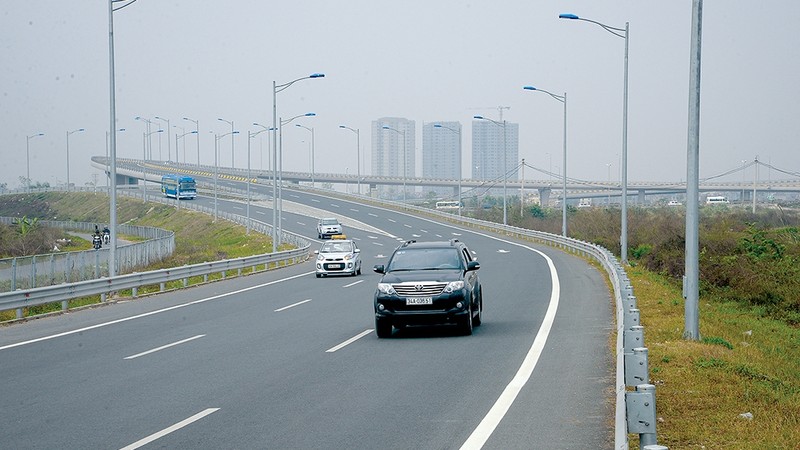Fastest disbursement rate in a decade
Aware of the impact of Covid-19 and global economic recession on the domestic economy, the Vietnamese government has stepped up the disbursement of public investment since the start of the year, considering it as a solution to prop up growth in 2020.
After a conference on public investment in July, the government dispatched seven delegations to ministries and provincial authorities to learn about the situation and seek measures to remove the bottlenecks in disbursement. As a result, the rate of public investment disbursement accelerated in the second half of 2020 to reach 91.1% of the full-year target, with the total figure at VND466.6 trillion (US$20.2 billion), up by 34.5% from 2019.
Although Vietnam failed to achieve the rate of 100%, but it was the highest rate during the 2011-2020 period, with a significant volume of funds spent on major infrastructure projects, notably three sections of the north-south expressway: Mai Son-National Highway 45, Vinh Hao-Phan Thiet and Phan Thiet-Dau Giay, whose construction started in the third quarter.
According to Pham Dinh Thuy at the General Statistics Office (GSO), with such an impressive disbursement rate, public investment was truly a driver of economic growth as the Covid-19 pandemic affected all aspects of socio-economic life, adding that the kick-off of many major projects helped to stimulate other sectors and boost growth in 2020.
Aggressive measures to accelerate public investment in the final months of 2020 played an important role in helping Vietnam achieve a strong recovery in the fourth quarter, when the economy expanded by 4.48%, far exceeding the previous three quarters.
The GSO estimates that for every 1 percentage point increase in public investment, GDP will rise by 0.06 percentage points. The largest effect of public investment was seen in the 6.76% growth rate recorded by the construction sector, making it a bright spot in the overall economic picture of 2020.
Growth in construction activity has resulted in the creation of more jobs and increased performance of other sectors such as building materials and transport. Furthermore, improved infrastructure will help businesses to cut costs and Vietnam to attract more investment.
The lesson from substantial improvements to public investment disbursement in the past year is that the authorities at all levels assumed greater responsibility in the management and use of such funds.
Appropriate funding allocation
2021 is the first year of the 2021-2025 medium-term public investment plan and the National Assembly is scheduled to approve the plan for this period in July 2021. In implementing a National Assembly resolution on budget allocation in 2021, the government has asked for the National Assembly’s Standing Committee’s permission to allocate funds such that ministries, sectors and provincial authorities can implement their public investment plans as soon as 2021 begins.
For the medium-term public investment plan, the government is placing emphasis on the goal of using funds more effectively and accelerating the progress of key projects. 2021 is expected to be the year in which Vietnam will commence construction on several urgent projects that are key to domestic economic recovery.
In order to enhance the effectiveness of disbursement, the Ministry of Planning and Investment (MPI) has informed ministries, sectors and localities that, under the 2019 Law on Public Investment, if one fails to disburse the funds allotted to them by January 31 of the following year, the undisbursed funds will be cut.
Therefore, the MPI has asked public investment recipients to review their planned projects to ensure that 100% of funds allocated to them are spent, in order to minimise the impact on the 2021-2025 medium-term plan.
Public investment is mainly concentrated on key socio-economic infrastructure projects, especially in transport, water resources, education, healthcare and agriculture. Thus, it will act as the lure to attract private and foreign investment, helping to increase total social investment to 33-34%, which is a highly important factor in reviving and maintaining economic growth in 2021.
















